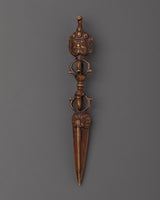
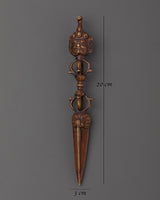
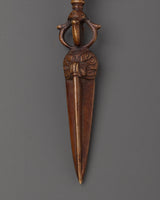

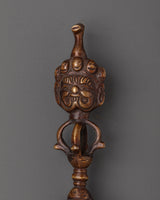
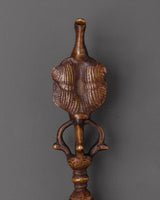
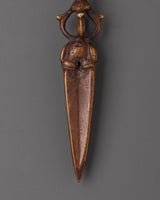
Spiritual Protection Phurba Dagger | Ritual Tool for Meditation and Protection

100% AUTHENTIC

HANDMADE

FREE SHIPPING
Copper Spiritual Protection Phurba Dagger | Ritual Dragger for Healing and Tibetan Practices
Weight: 0.14kg
Materials: Copper
The Spiritual Protection Phurba Dagger is a beautifully crafted ritual tool, standing 20cm tall and made from copper. Celebrated in Tibetan Buddhist traditions, this Phurba channels energy to guard against negative forces, making it an essential companion for meditation, rituals, and spiritual protection. Its clean, sacred design embodies profound symbolism, helping deepen your spiritual practice. Whether placed on an altar or held during ceremonies, this Phurba supports purification, healing, and balance, empowering your journey toward spiritual growth and protection.
Crafted from copper, this Phurba Dagger combines functionality with beauty. Measuring 3cm in width, it offers a comfortable grip, making it perfect for use during meditation or ritual ceremonies. The copper body not only provides a sacred and elegant appearance. Traditionally, the Phurba is used as a spiritual protection tool, helping to eliminate negative energies, support healing, and restore balance during spiritual practices. Its presence purifies the energy in your space, creating a harmonious environment that fosters growth and protection. This essential tool is ideal for anyone seeking to deepen their spiritual journey and maintain energetic clarity.

















